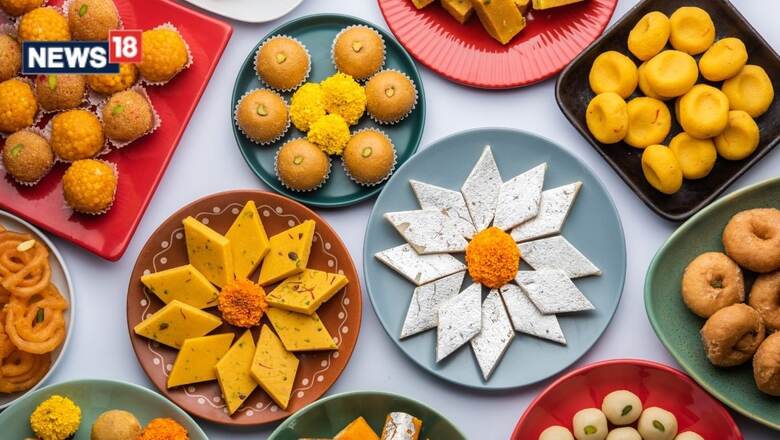
views
As the festive season unfolds, bringing the joy of Christmas and the anticipation of the New Year, households in India come alive with the aroma of delectable sweets. Festivals in the country are not just about rituals and celebrations but also about indulging in the rich, sweet delights that adorn every home. However, amidst the festive fervour, a pertinent question arises: How do halwai shops manage to meet the skyrocketing demand for sweets during this time? And more importantly, what goes into the sweets we buy for our loved ones? Shivam Bhagat, Director, Bhagat Halwai distinguishes between real and fake mithai:
- Compromised qualityAdulteration is a common malpractice among some sweet makers who compromise the quality of sweets, particularly those made with dairy. To ensure the sweets you purchase are of the highest standard, conduct a few straightforward tests before selecting.
- Fake foilMost mithais are often adorned with a touch of luxury in the form of silver foil. However, some unscrupulous shopkeepers substitute this silver foil with a cheaper alternative—aluminium foil. To identify the authenticity, a gentle touch to the top of the sweet can reveal the truth. It is likely fake if the layer easily comes off onto your finger. Additionally, heating a small portion of the foil on a spoon can tell that authentic silver leaves will glister, while aluminium foil will transform into grey ash.
- Natural vs. Artificial coloursExamine the colour of the mithai carefully. Authentic sweets often use natural dyes derived from ingredients like saffron or cardamom. Artificially coloured sweets may have a vibrant and uniform appearance, but natural variations in colour indicate authenticity.
- Analysing the aromaBefore purchasing sweets in bulk, it’s essential to rely on your olfactory senses. Stale mithai tends to emit a musty smell and taste sour. One can easily discern whether the sweet has maintained its freshness by giving it a good sniff.
- Softness and consistencyGenuine mithai boasts a distinct texture that is soft, moist, and consistent. Fake sweets may feel excessively sticky, hard, or uneven in texture. Trust your fingers to guide you through the tactile experience.
- Khoya emits pure aromaFor those inclined to make sweets at home, khoya (mawa) quality (reduced milk) is crucial. A simple test involves rubbing a small amount of khoya on your thumbnails. Pure khoya emits the rich aroma of ghee, providing a clear indication of its authenticity. Moreover, if it releases water, it is likely fake. This simple test ensures that the mawa or khoya used is of the highest quality.
- Detecting detergentThe most alarming form of adulteration involves the use of detergent in sweets. To check for this, dissolve a portion of the sweet in water and shake it vigorously. If the mixture forms lather, it indicates the presence of detergent, signaling a compromised product.
In gist, as the festive season unfolds and the demand for sweets rises, it becomes imperative to be vigilant about the quality of the mithai we consume. By employing these simple tests, consumers can ensure that the sweets they share with loved ones are not just delicious but also free from any compromise in quality. After all, in the world of sweets, authenticity is the critical ingredient for a truly joyous celebration.


















Comments
0 comment